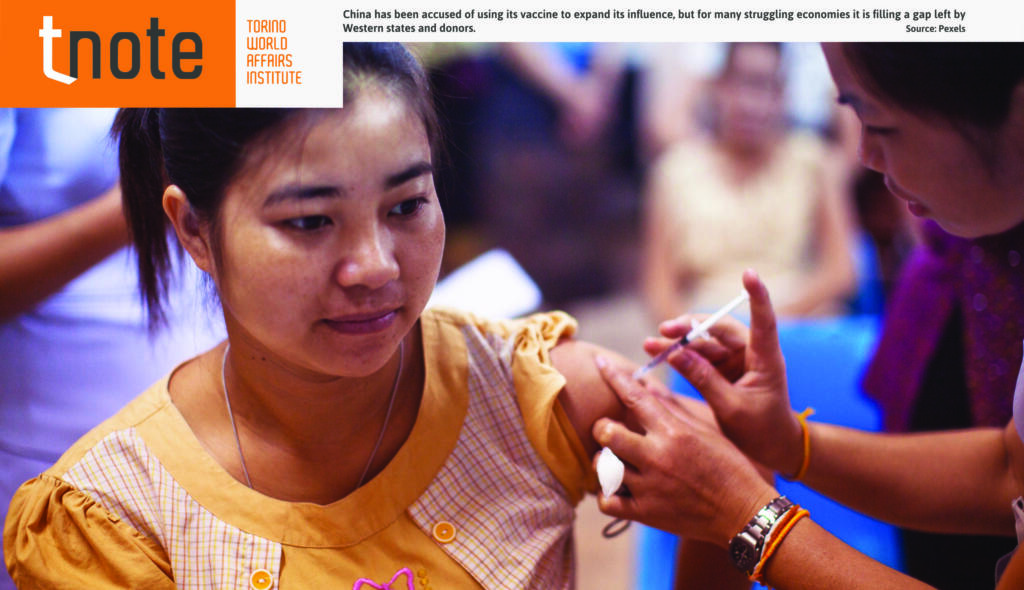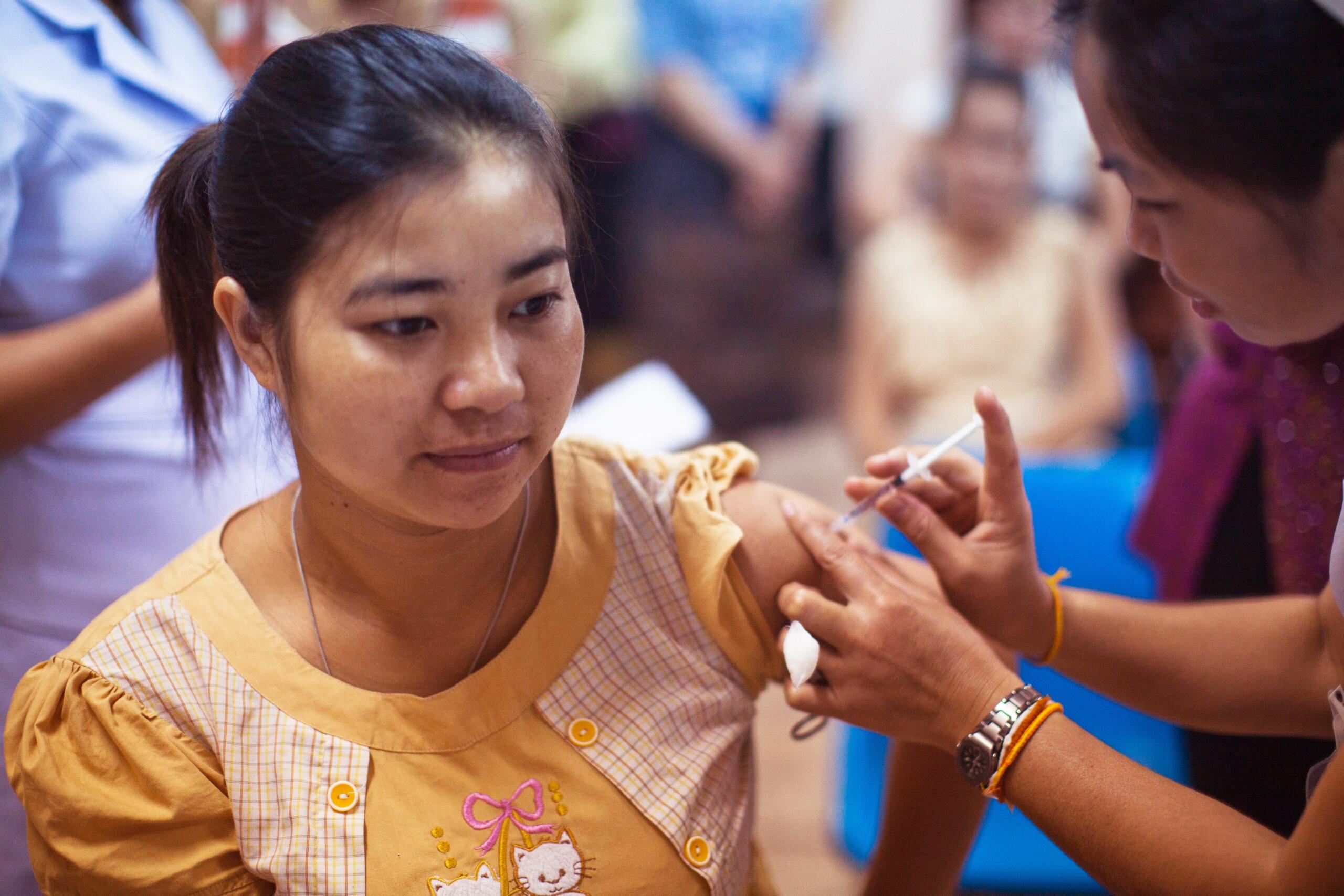
The whole world has been dealing with the COVID-19 pandemic for more than a year, but not all regions and countries have been hit the same way. Several Southeast Asian countries have managed to limit the spread of the virus, but this has come at a high price, especially considering the region’s dependence on tourism. In addition, the vaccination process across Southeast Asia is proceeding slowly, and neighbouring powers such as China and India are eager to take advantage of this situation through what has been labelled ‘vaccine diplomacy’. How and to what extent are external competitors gaining soft power in Southeast Asia – in the form of goodwill for the help received and a potential reputational uptick – and what does this mean for the future of the region?
The first period of the pandemic saw a shortage of medical supplies, such as masks. Many countries around the world were caught unprepared and had to depend on foreign manufacturers. At the same time, a few countries were able not only to cover their needs, but also to export the surplus. China, for instance, was soon in a position to allocate its production surplus to many countries in need, in Asia as elsewhere. This phenomenon preceded the use of vaccines and was widely referred to as ‘mask diplomacy’: an effort to build a positive narrative to win hearts and minds. Yet, in addition to concerns over the quality of the products, Western media quickly interpreted China’s conduct as an attempt to compensate for the spread of the virus beyond its borders.
Because of different social norms, urban pollution and experiences with past outbreaks, mask supplies across Southeast Asia were probably higher than elsewhere. Thus, this first phase of China’s diplomatic efforts might have been more beneficial in other parts of the world, such as Europe or Africa. With vaccines, instead, it is an entirely different story. As few countries in Southeast Asia are able to develop and produce vaccines, especially in a timely and sufficient manner, external help is welcome and sought after.

China has been accused of using its vaccine to expand its influence, but for many struggling economies it is filling a gap left by Western states and donors. Source: Pexels
Media coverage surrounding ‘vaccine diplomacy’ mainly focuses on China’s efforts, particularly in Southeast Asia. This is partly because Beijing’s promises and deals came early. In spite of intensifying frictions in the South China Sea, in July 2020 the Chinese Ministry of Foreign Affairs promised the Philippines priority access to a vaccine. This was followed by an agreement between Sinovac, a Chinese state-owned company, and Indonesia to eventually “have the capacity to produce 250 million doses a year.” Soon afterwards, Myanmar was also promised early access to a Chinese vaccine. All Southeast Asian countries except for Vietnam have reached agreements concerning the provision of vaccines, which is especially important given that vaccinations against COVID-19 may become a yearly occurrence, thus requiring long-term partnerships. Due to the severity of the situation, a report noted, many countries are ‘increasingly inclined to contemplate’ long-term dependency on Beijing, as long as it can lead to a smoother economic recovery.
China’s strategy has both advantages and pitfalls. On the one hand, the country is a first mover that is already shipping vaccines. China’s vaccines can be stored at higher temperatures and thus do not require refrigeration like most of its Western counterparts’, and hence they are more suitable for developing countries. On the other hand, China took some time to share the results of its trials and this lack of transparency gives rise to scepticism. Thailand’s prime minister has made it clear that Thailand will not accept its citizens being used as ‘guinea pigs’ on which to test vaccines. Overall, China is not the most trusted producer, but if alternatives are lacking, most countries will still welcome Beijing’s offer.
Beyond China, India is also said to be taking ‘vaccine diplomacy’ seriously. However, when closely observing the country’s efforts, there is evidence that ‘India’s vaccine prowess comes from collaboration, not self-reliance’, since the bulk of its production and donations depend on collaborations with Western powers. For instance, India has joined forces with the other Quad powers – the US, Japan and Australia – in pledging to deliver one billion doses of vaccines against COVID-19 to various Asian countries by the end of 2022. So far, India’s efforts have been mainly confined to its own region. Across Southeast Asia, India has donated 1.5 million doses to Myanmar and 100,000 to Cambodia.
China’s efforts have a more global outlook, but the country relies on domestic production of vaccines. Overall, China seems to favour bilateral interactions, but the country has recently joined COVAX – a global initiative aimed at equitable access to vaccines – hence there may be room for future collaboration.
Due to the growing relevance of the phenomenon, Think Global Health has been tracking the ‘politics of vaccine donation and diplomacy’ worldwide. By late March 2021, Myanmar, Laos and Cambodia had received donations from both India and China, and the Philippines from China only, while Russia had pledged a symbolic 1,000 doses to Vietnam. The report also highlights the fact that all but one recipients of Chinese aid are part of the Belt and Road Initiative, signalling Beijing’s eagerness to push for the ‘Health Silk Road’ under the Belt and Road umbrella. In spite of widespread scepticism, Chinese vaccines are already being delivered to various Southeast Asian countries, and only its southern neighbour Vietnam is likely to persist in shunning its shots.
Early reports that covered China’s intent to capitalize on international assistance were cautiously optimistic, recognizing solidarity, multilateralism and transparency as the paramount features of a strategy aimed at boosting its international image and reputation. A more recent – but comparably cautious – piece from Foreign Affairs claimed that China’s vaccine diplomacy was ‘paying off’ because it had an early lead, but Beijing has not yet won the ‘soft-power stakes’.
Not everyone is convinced that China’s efforts are paying off, however, as it may be too early to jump to conclusions. The 2021 State of Southeast Asia Survey, from Singapore’s ISEAS–Yusof Ishak Institute, showed that 44.2% of the respondents acknowledged China as the major provider of assistance during the pandemic, followed by Japan, the EU and the US. At the same time, more than 70% of them claimed to be worried about China’s growing influence in the region. However, responses were collected in early 2021, and if China manages to deliver on its promises, and if this outcome is paired with ‘travel bubbles’ that can jump-start regional economies, greater recognition of its beneficial role may follow.
Considering that the virus was first detected in China to then spread globally, the country may not be guilt-free, but neither are Western powers, and some have been accused of ‘vaccine nationalism’. As summarized by Chatham House, ‘China has been accused of using its vaccine to expand its influence, but for many struggling economies it is filling a gap left by Western states and donors’. All things considered, from the perspective of Southeast Asia, the Quad’s pledge should be put into action sooner rather than later, and if it is hoped that it will gain some ground on China’s ‘vaccine diplomacy’, already in place and operating at full steam, it had better be implemented in a competent way.
Author
Daniele Carminati is a PhD Candidate at the Department of Asian and International Studies of the City University of Hong Kong.
Download

Copyright © 2025. Torino World Affairs Institute All rights reserved
